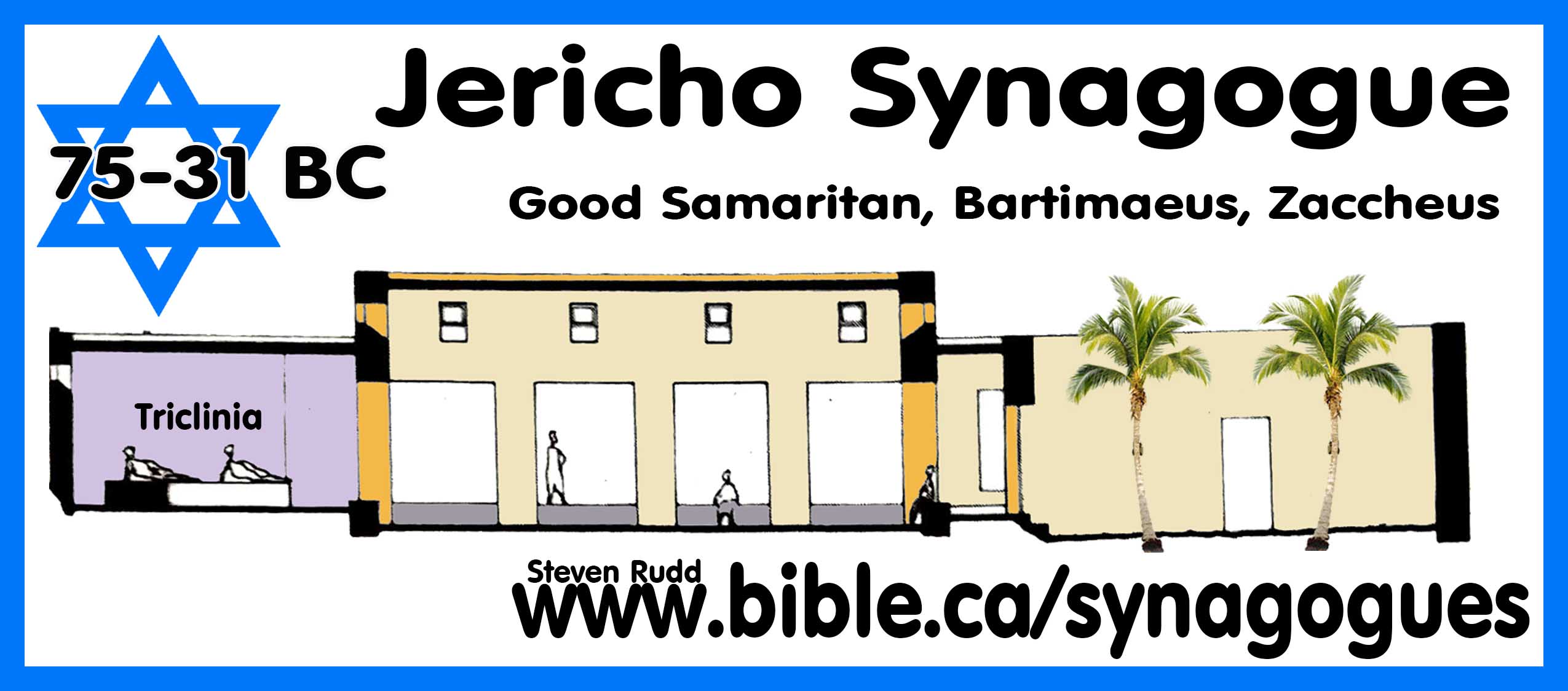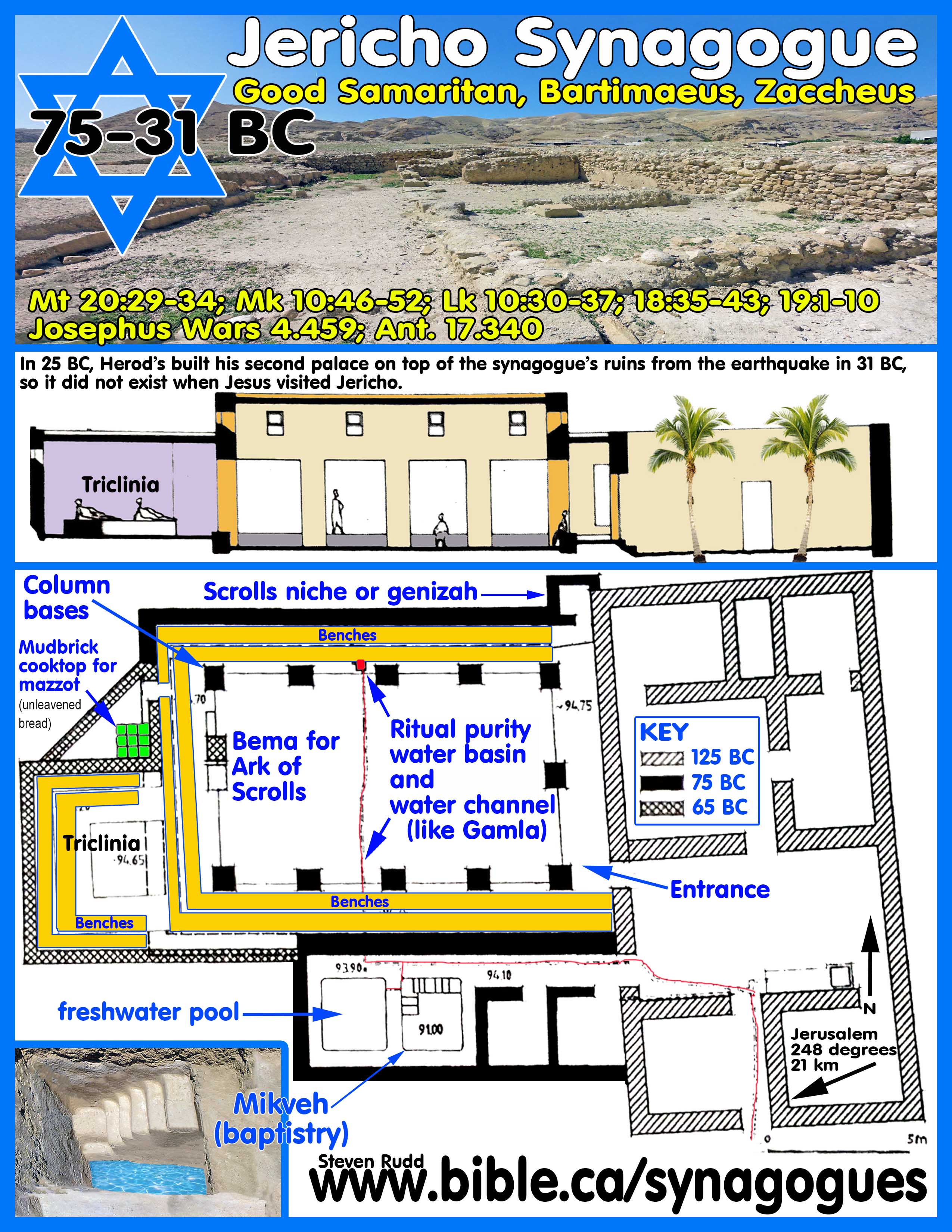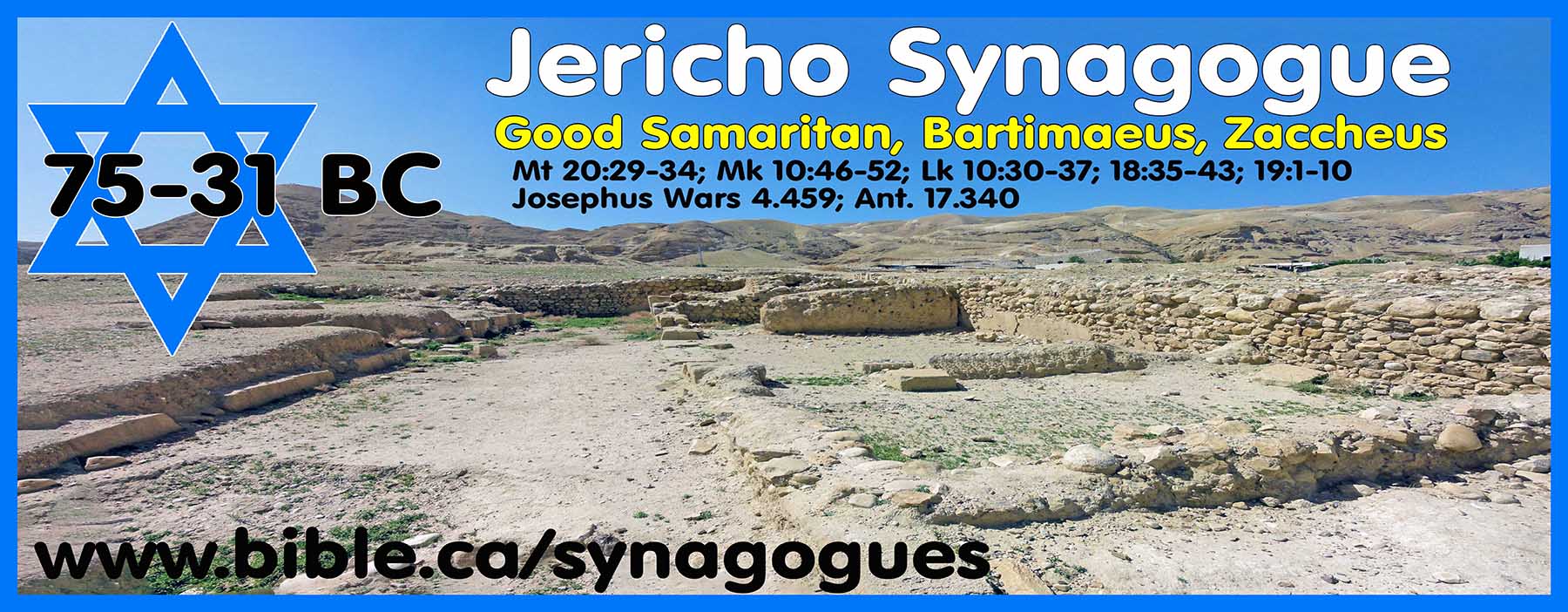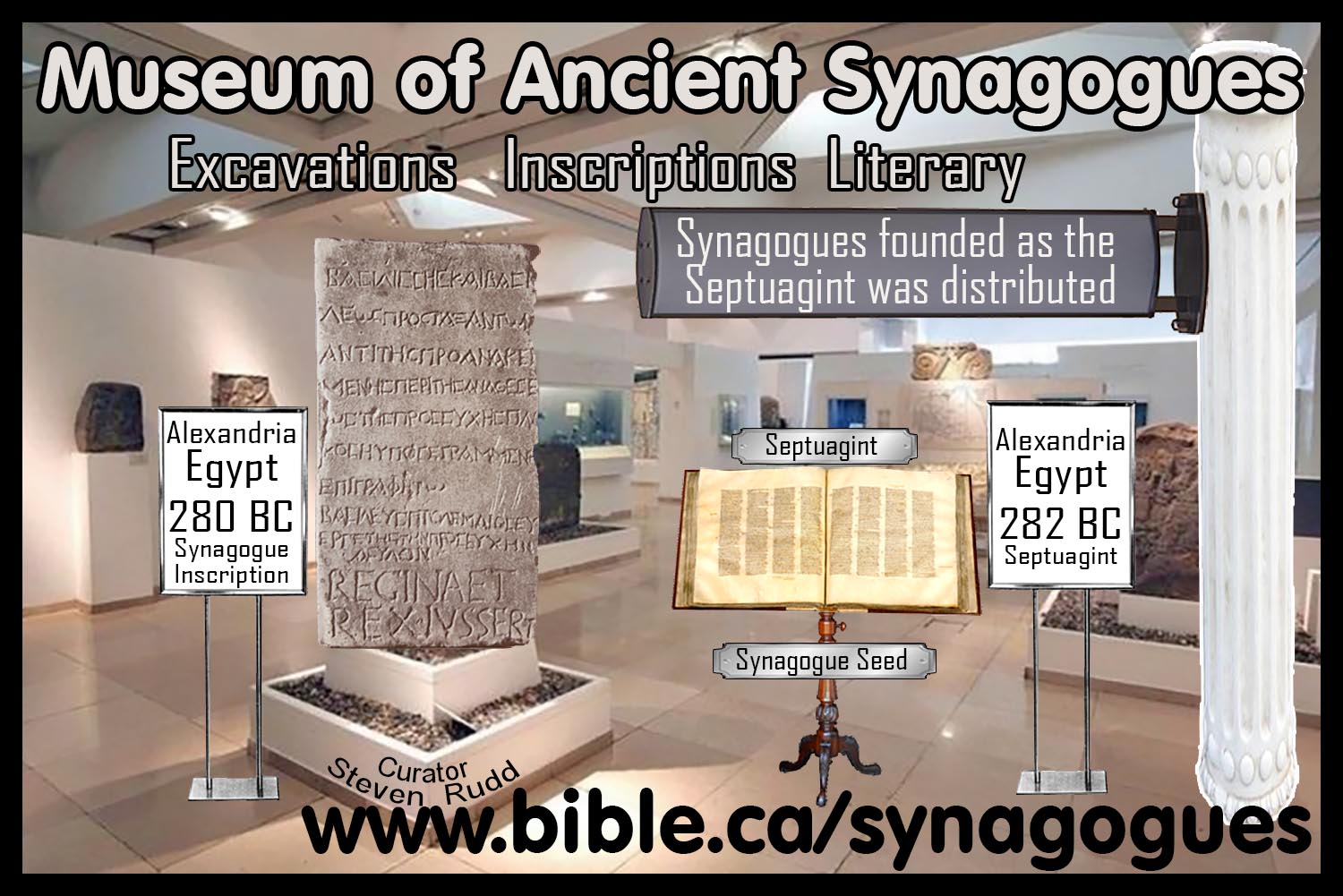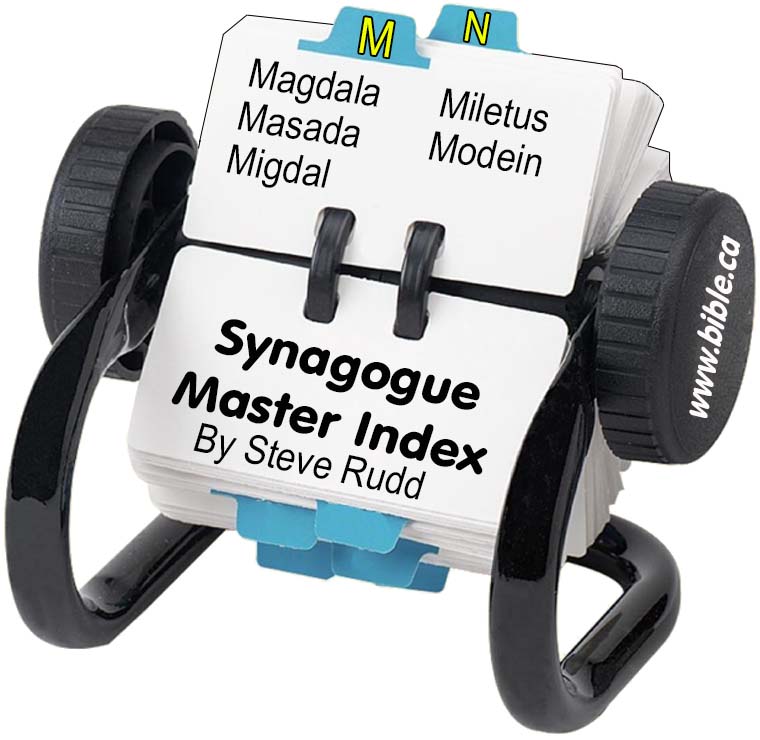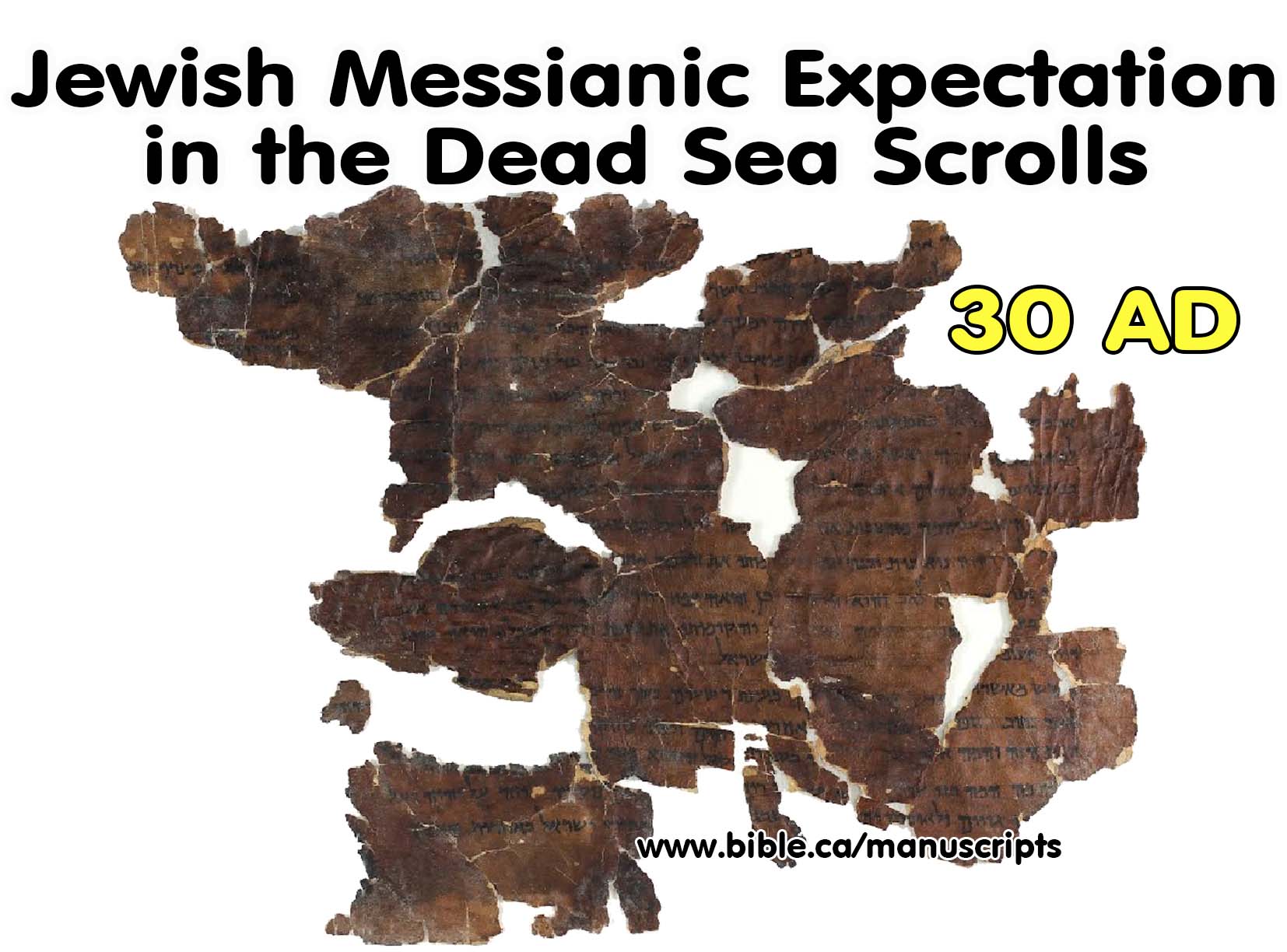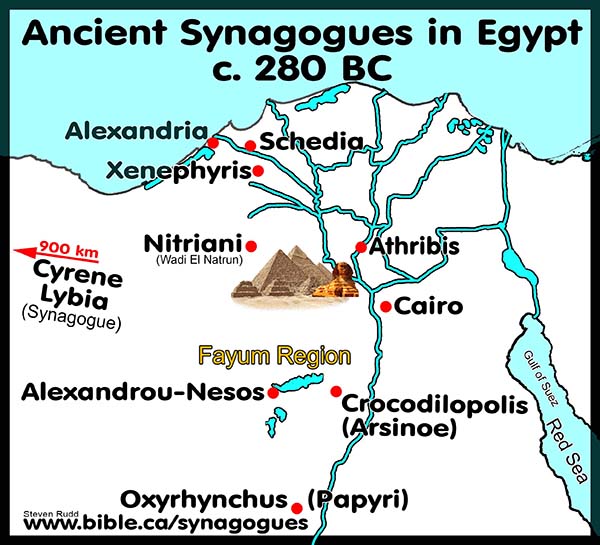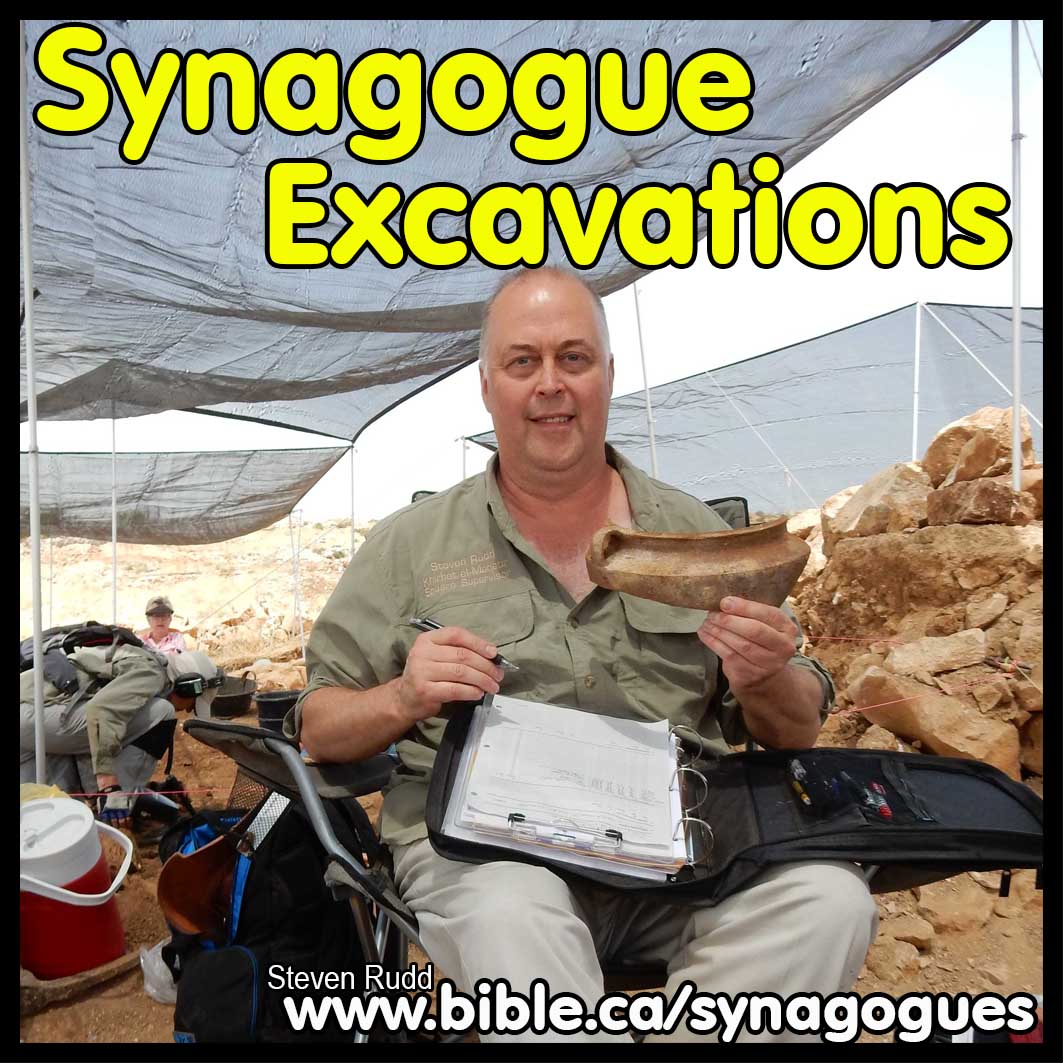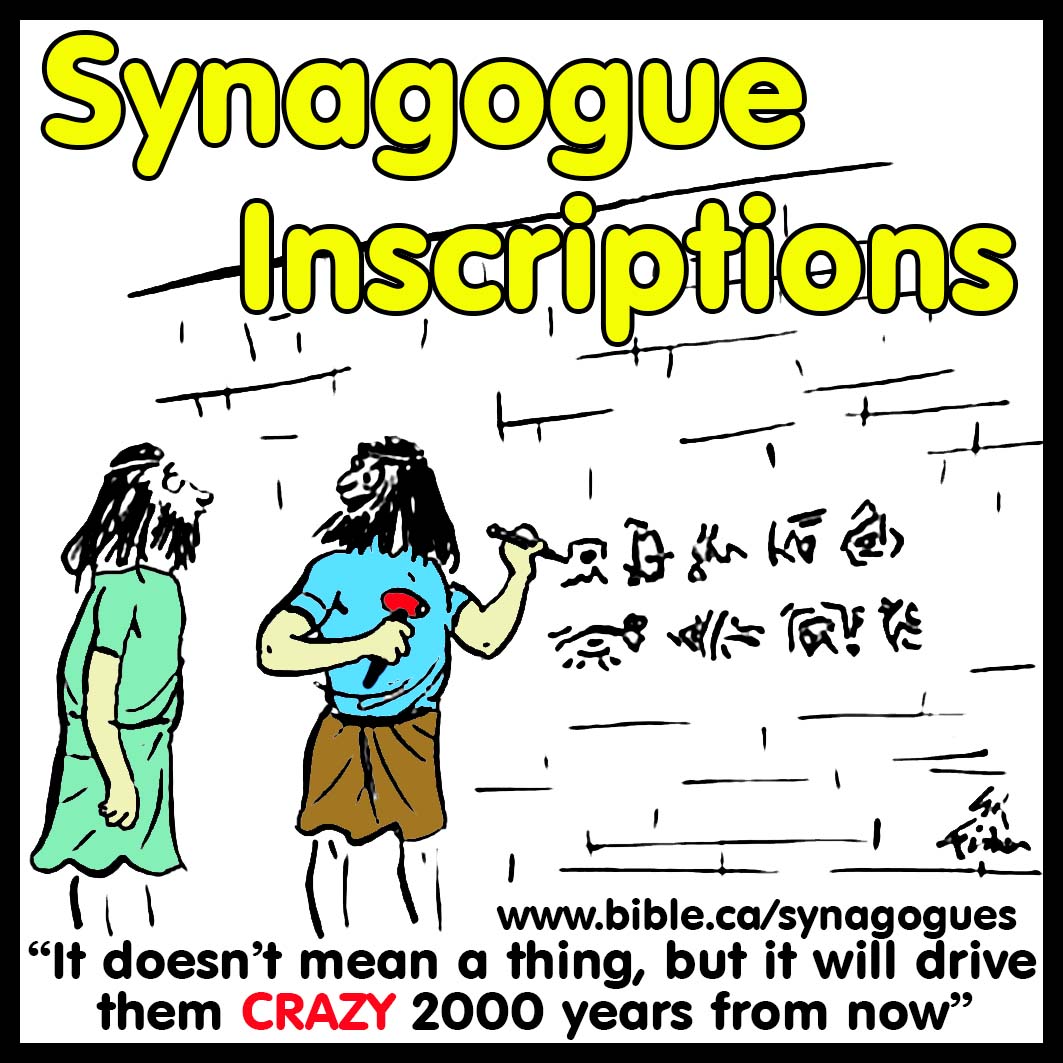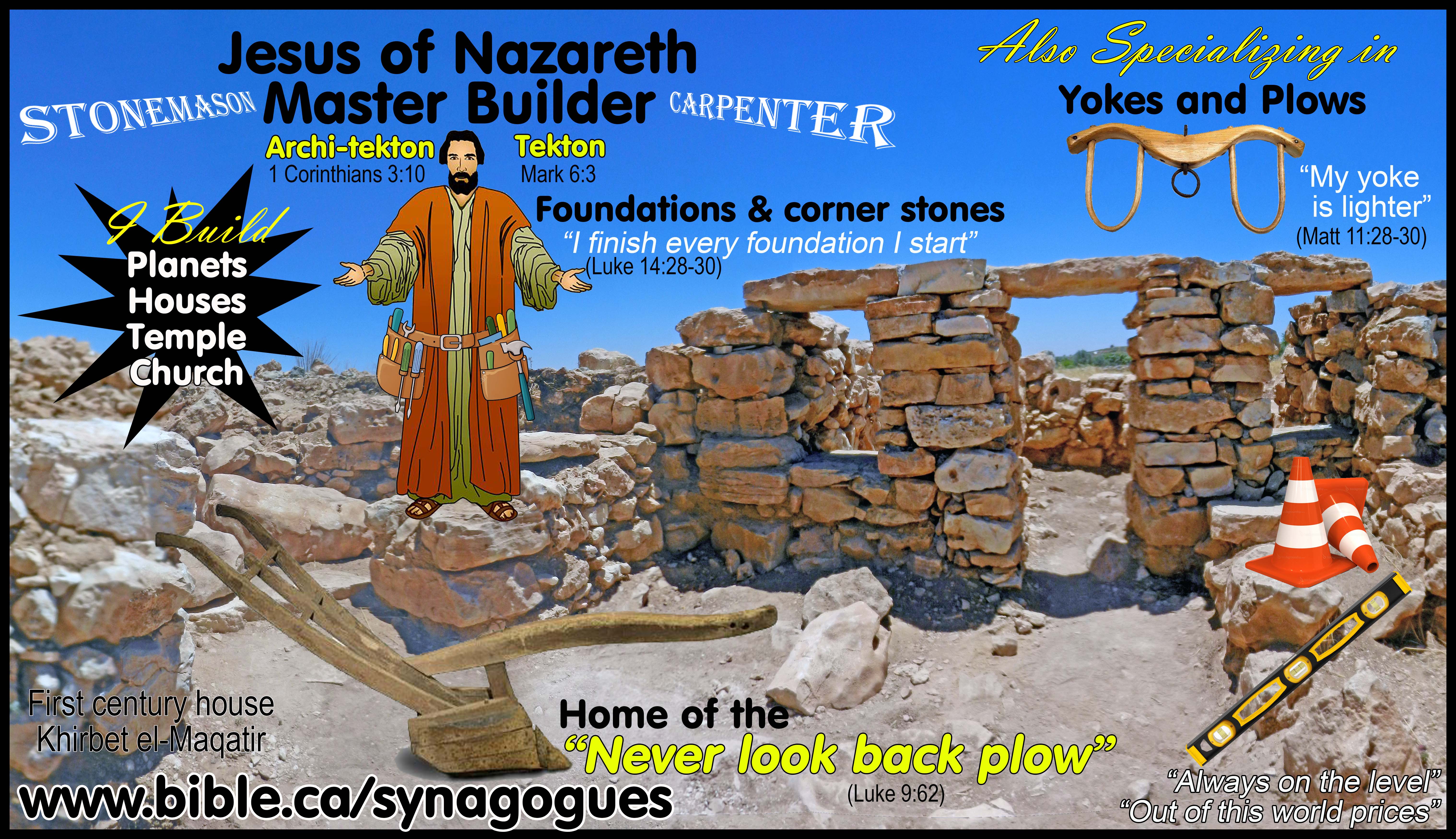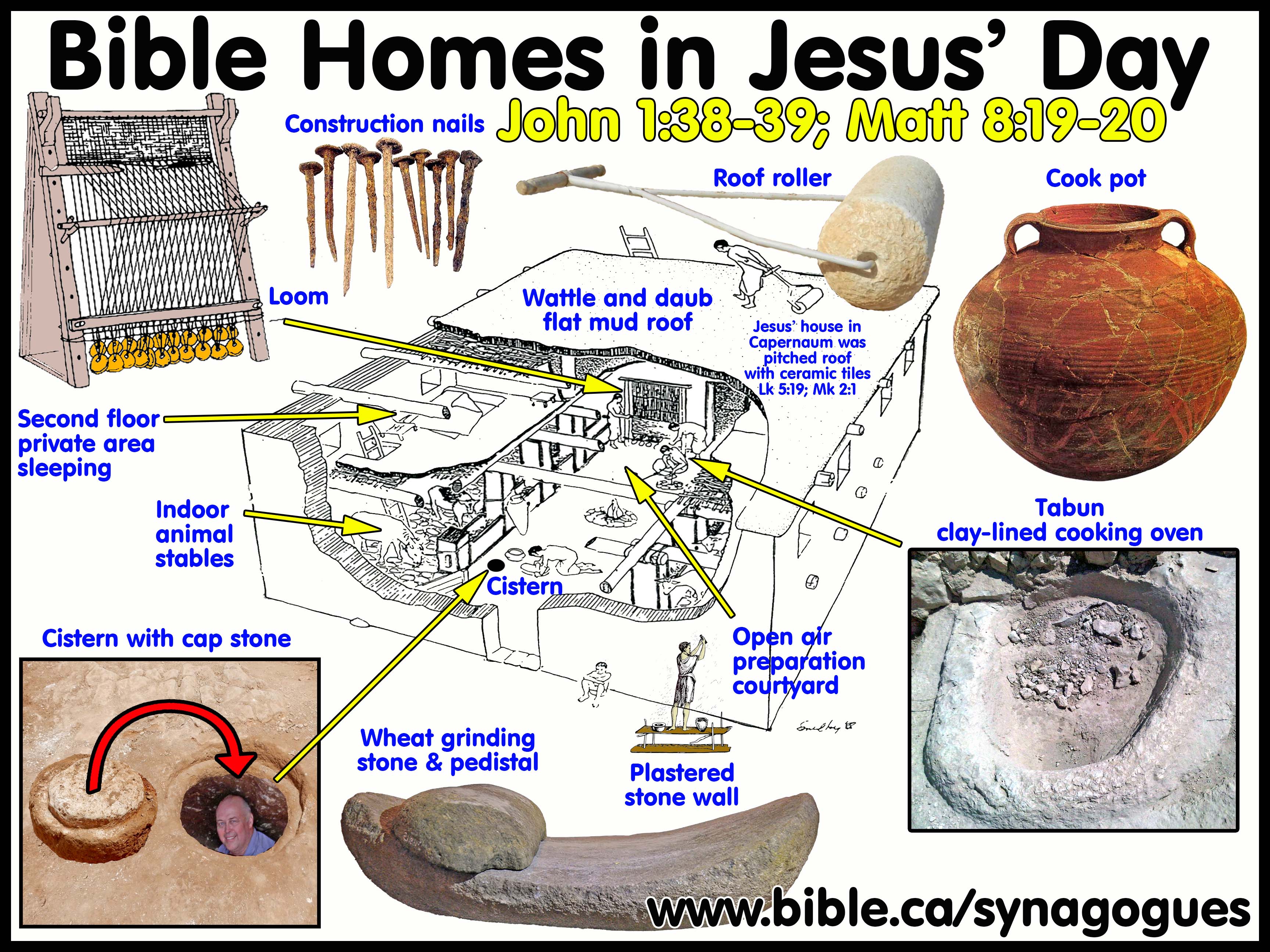First Century Synagogue Top Plans: Jericho 75 BC
Archeological Excavations of Oldest Synagogues in the world
|
New Testament Jericho 75 BC |
Click on photos for high resolution
Introduction:
1. Alleged Bible contradiction refuted: Jesus was COMING OUT (Luke 18:35-43) of Old Testament Jericho and APPROACHING (Matthew 20:29-34) New Testament Jericho. If Bible trashers would do the tiniest bit of real research, they would not say things they will very much regret on Judgment day when they kneel before Jesus and confess He is Lord of all!
2. There is no record of any synagogue in the New Testament at Jericho, much less that Jesus actually visited on there. However, we do have two known synagogues that have been excavated in Jericho which you can visit today.
3. One in New Testament Jericho 3 km away from the other. (75-31 BC)
a. In 25 BC, Herod’s built his second palace on top of the synagogue’s ruins from the earthquake in 31 BC,
a.so it did not exist when Jesus visited Jericho.
4. One
in Old Testament Jericho: Byzantine (likely the one Jesus visited)
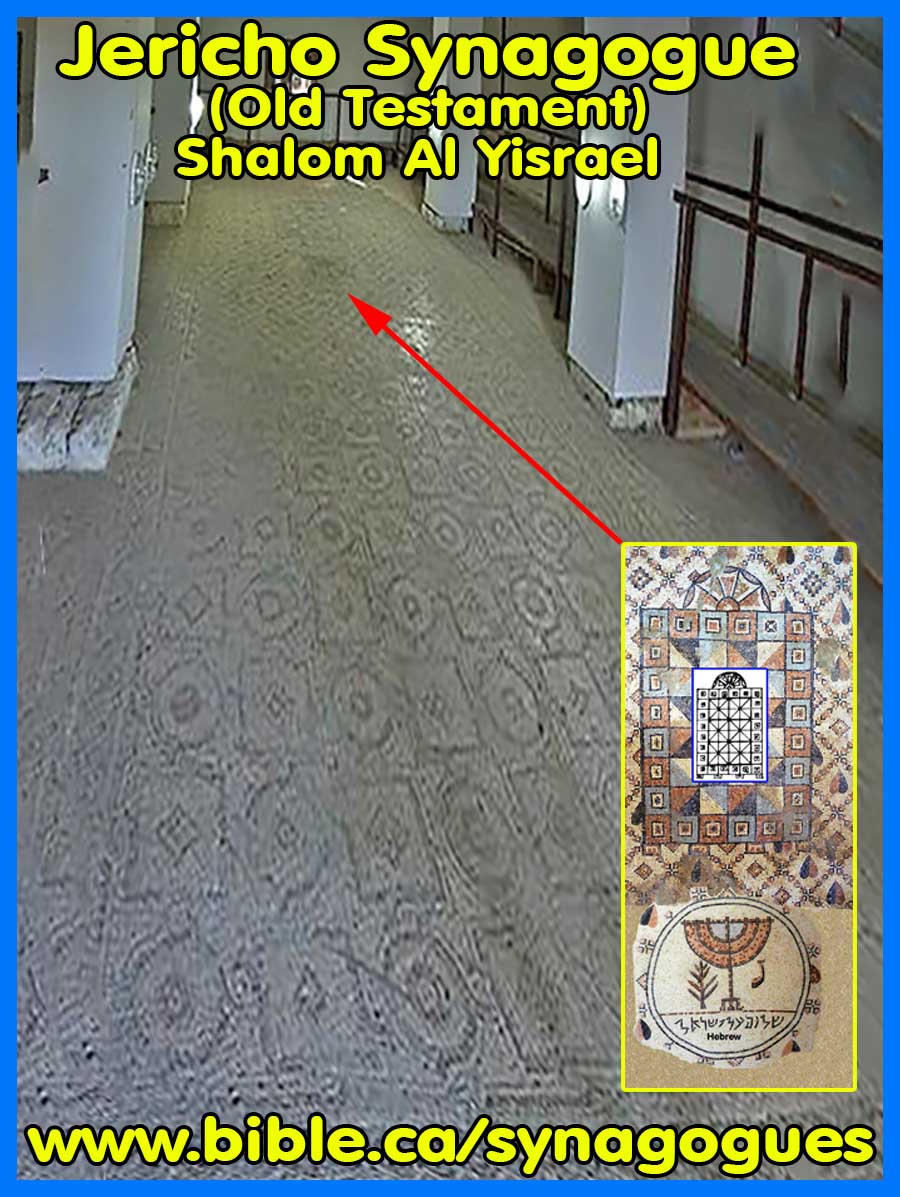
a. The synagogue of the first century is probably the Shalom Al Yisrael synagogue, which is in an enclosed white building in Old Testament Jericho and features amazing mosaics.
b. The Mosaics from the Byzantine Old Testament Jericho synagogue feature hearts and a stunning representation of the Ark of the Scrolls wooden cabinet.
c.
See also: Niches & Ark of The Scrolls: Prototype
of Church Apse
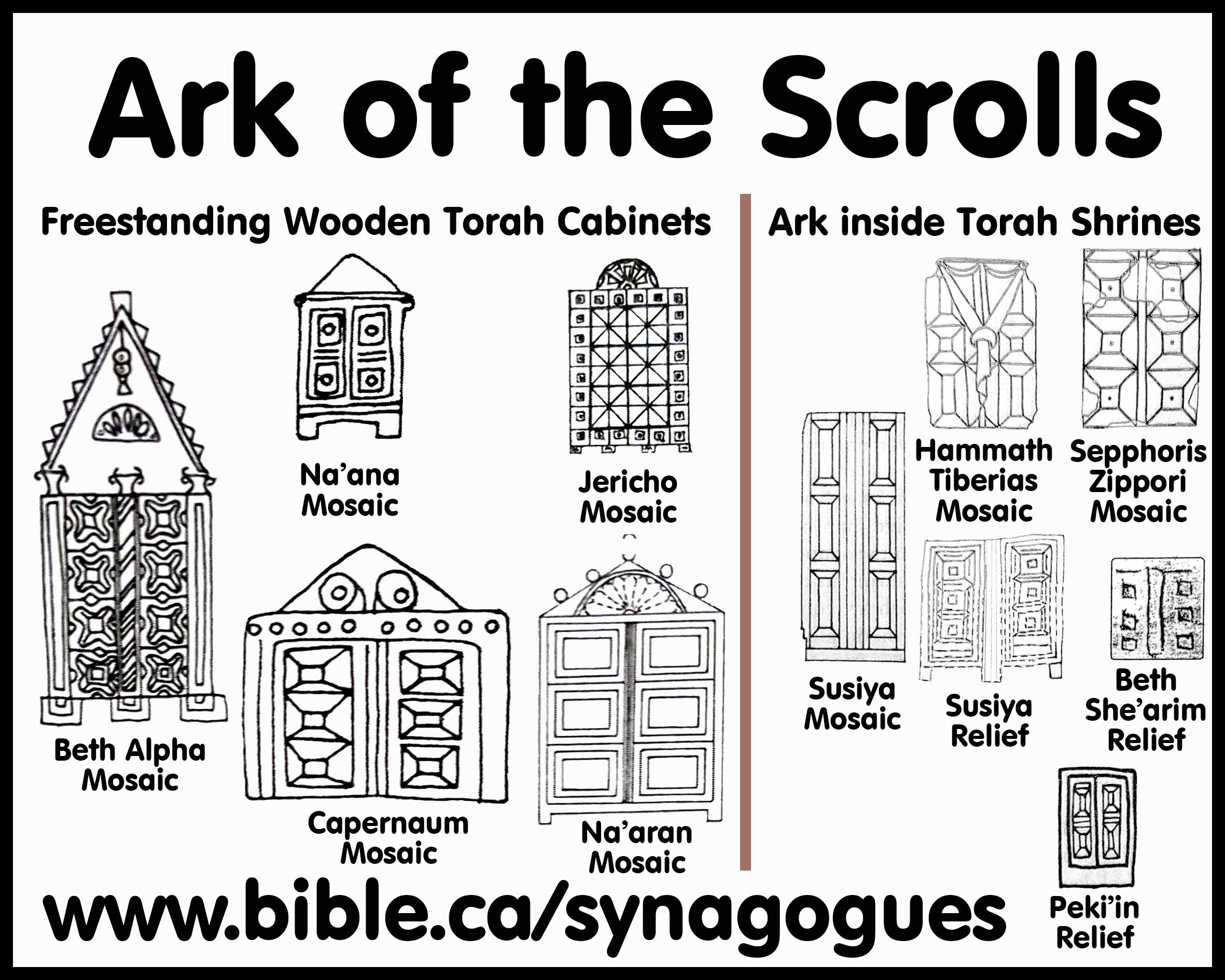
d. “(kehila kadisha), that is, the 'holy community' which donated the mosaic, appears in the Aramaic dedicatory inscription on a mosaic pavement at the entrance to the Jericho synagogue; the same term is found on a marble chancel screen at the Susiya synagogue, referring to the 'holy community' that maintains [the place] (Naveh 1978:nos. 69, 84).” (Ancient Synagogues - Archaeology and Art: New Discoveries and Current Research, Rachel Hachlili, p 12, 2013 AD)
e.
“The rabbis of the community are referred to on an Aramaic dedication
mosaic inscription at the entrance to the Jericho synagogue.” (Ancient
Synagogues - Archaeology and Art: New Discoveries and Current Research, Rachel
Hachlili, p 17, 2013 AD)
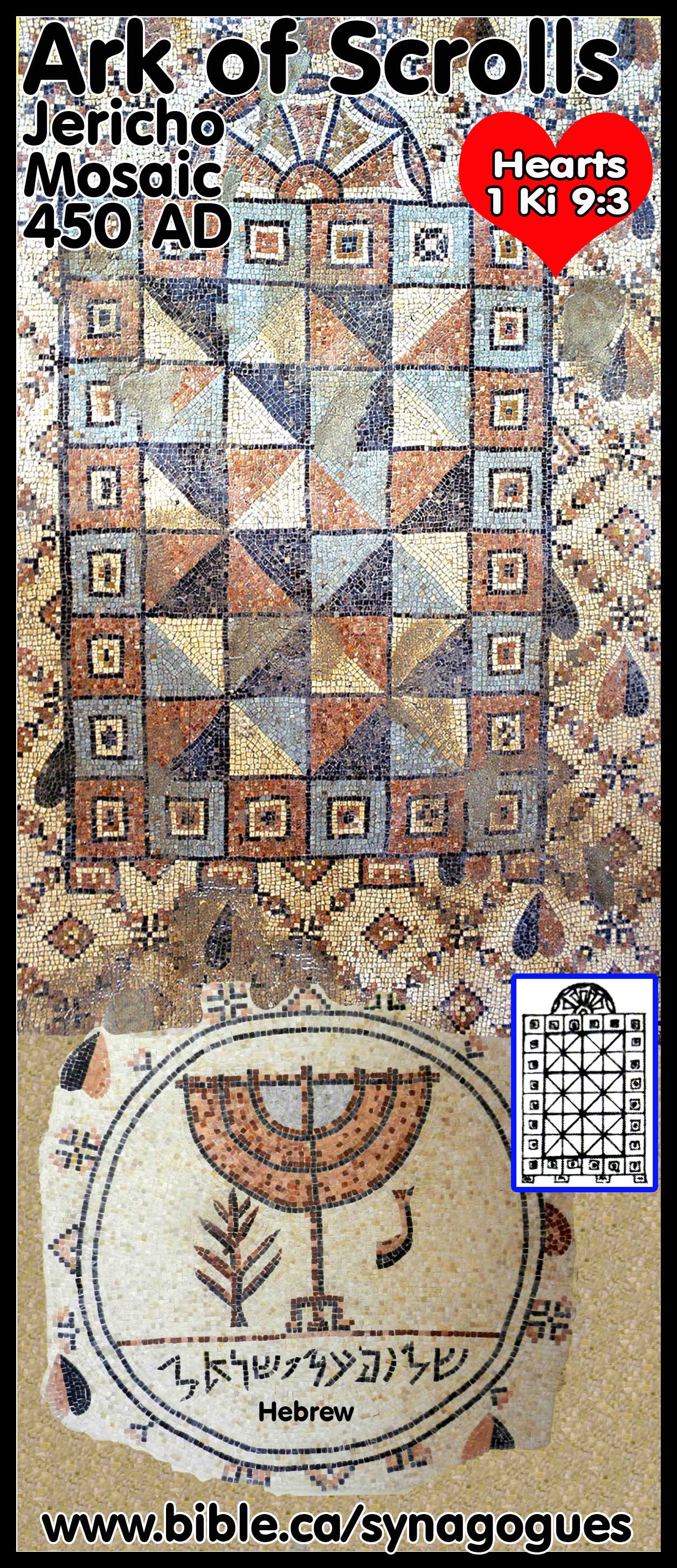
A. Earliest Synagogue Occupation Date (SOD) = 75 BC
1. Excavation date: TWO SYNAGOGUES: first century and Byzantine (likely also dates back to the first century)
2. Inscriptional date: none
3. Literary date:
4. SOD computation system details: Excavation date + Inscriptional date + Literary date = SOD.
B. Synagogue Compass Orientation:
1. Orientation East or towards Jerusalem: No.
2. Compass headings:
a. Compass heading towards Jerusalem: 248 Degrees.
b. Distance to Jerusalem: 21 Kilometers.
3. When an archeologist begins excavating a newly discovered synagogue, the first thing he does to determine if it is a first temple, pre-70 AD installation is determine the orientation.
a. If the synagogue points east it is not pre-70 AD but built after 200 AD.
b. If the synagogue is oriented towards Jerusalem it is not pre-70 AD but built after 200 AD.
4. See Orientation: Early Synagogues did not Point to Jerusalem
C. Bible and other Literary references:
1. Jesus must have visited the synagogue often: Mt 20:29-34; Mk 10:46-52; Lk 10:30-37; 18:35-43; 19:1-10
2. Good Samaritan: Luke 10:30–37
a. "Jesus replied and said, “A man was going down from Jerusalem to Jericho, and fell among robbers, and they stripped him and beat him, and went away leaving him half dead. “And by chance a priest was going down on that road, and when he saw him, he passed by on the other side. “Likewise a Levite also, when he came to the place and saw him, passed by on the other side. “But a Samaritan, who was on a journey, came upon him; and when he saw him, he felt compassion, and came to him and bandaged up his wounds, pouring oil and wine on them; and he put him on his own beast, and brought him to an inn and took care of him. “On the next day he took out two denarii and gave them to the innkeeper and said, ‘Take care of him; and whatever more you spend, when I return I will repay you.’ “Which of these three do you think proved to be a neighbor to the man who fell into the robbers’ hands?” And he said, “The one who showed mercy toward him.” Then Jesus said to him, “Go and do the same.”" (Luke 10:30–37)
3. Bartimaeus: Mark 10:46–52
a. "Now they came to Jericho. As He went out of Jericho with His disciples and a great multitude, blind Bartimaeus, the son of Timaeus, sat by the road begging. And when he heard that it was Jesus of Nazareth, he began to cry out and say, “Jesus, Son of David, have mercy on me!” Then many warned him to be quiet; but he cried out all the more, “Son of David, have mercy on me!” So Jesus stood still and commanded him to be called. Then they called the blind man, saying to him, “Be of good cheer. Rise, He is calling you.” And throwing aside his garment, he rose and came to Jesus. So Jesus answered and said to him, “What do you want Me to do for you?” The blind man said to Him, “Rabboni, that I may receive my sight.” Then Jesus said to him, “Go your way; your faith has made you well.” And immediately he received his sight and followed Jesus on the road." (Mark 10:46–52)
4. Zaccheus, Tax collector: Luke 19:1–10
a. "He entered Jericho and was passing through. And there was a man called by the name of Zaccheus; he was a chief tax collector and he was rich. Zaccheus was trying to see who Jesus was, and was unable because of the crowd, for he was small in stature. So he ran on ahead and climbed up into a sycamore tree in order to see Him, for He was about to pass through that way. When Jesus came to the place, He looked up and said to him, “Zaccheus, hurry and come down, for today I must stay at your house.” And he hurried and came down and received Him gladly. When they saw it, they all began to grumble, saying, “He has gone to be the guest of a man who is a sinner.” Zaccheus stopped and said to the Lord, “Behold, Lord, half of my possessions I will give to the poor, and if I have defrauded anyone of anything, I will give back four times as much.” And Jesus said to him, “Today salvation has come to this house, because he, too, is a son of Abraham. “For the Son of Man has come to seek and to save that which was lost.”" (Luke 19:1-10)
5. The healing of he blind man: Luke 18:35–43; Matthew 20:29–34
a. Alleged contradiction refuted: Jesus was COMING OUT (Luke 18:35-43) of Old Testament Jericho and APPROACHING (Matthew 20:29-34) New Testament Jericho. If Bible trashers would do the tiniest bit of real research, they would not say things they will very much regret on Judgment day when they kneel before Jesus and confess He is Lord of all!
b. "Then it happened, as He was coming near Jericho, that a certain blind man sat by the road begging. And hearing a multitude passing by, he asked what it meant. So they told him that Jesus of Nazareth was passing by. And he cried out, saying, “Jesus, Son of David, have mercy on me!” Then those who went before warned him that he should be quiet; but he cried out all the more, “Son of David, have mercy on me!” So Jesus stood still and commanded him to be brought to Him. And when he had come near, He asked him, saying, “What do you want Me to do for you?” He said, “Lord, that I may receive my sight.” Then Jesus said to him, “Receive your sight; your faith has made you well.” And immediately he received his sight, and followed Him, glorifying God. And all the people, when they saw it, gave praise to God." (Luke 18:35–43)
c. "Now as they went out of Jericho, a great multitude followed Him. And behold, two blind men sitting by the road, when they heard that Jesus was passing by, cried out, saying, “Have mercy on us, O Lord, Son of David!” Then the multitude warned them that they should be quiet; but they cried out all the more, saying, “Have mercy on us, O Lord, Son of David!” So Jesus stood still and called them, and said, “What do you want Me to do for you?” They said to Him, “Lord, that our eyes may be opened.” So Jesus had compassion and touched their eyes. And immediately their eyes received sight, and they followed Him." (Matthew 20:29–34)
6. Josephus describes Jericho at the time of Jesus as a place Elijah performed miracles:
a. Notwithstanding which, there is a fountain by Jericho; that runs plentifully, and is very fit for watering the ground, it rises near the old city, which Joshua, the son of Nun, the general of the Hebrews, took the first of all the cities of the land of Canaan, by right of war. (460) The report is, that this fountain, at the beginning, caused not only the blasting of the earth and the trees, but of the children born of women; and that is was entirely of a sickly and corruptive nature to all things whatsoever, but that it was made gentle, and very wholesome and fruitful, by the prophet Elisha. This prophet was familiar with Elijah, and was his successor, (461) who when he once was the guest of the people of Jericho, and the men of the place had treated him very kindly, he both made them amends as well as the country, by a lasting favor; (462) for he went out of the city to this fountain, and threw into the current an earthen vessel full of salt; after which he stretched out his righteous hand unto heaven, and, pouring out a mild drink offering, he made this supplication,—that the current might be mollified, and that the veins of fresh water might be opened; (463) that God also would bring into the place a more temperate and fertile air for the current, and would bestow upon the people of that country plenty of the fruits of the earth, and a succession of children; and that this prolific water might never fail them, while they continued to be righteous. (464) To these prayers Elisha joined proper operations of his hands, after a skillful manner, and changed the fountain, and that water which had been the occasion of barrenness and famine before, from that time did supply a numerous posterity, and afforded great abundance to the country. (465) Accordingly, the power of it is so great in watering the ground, that if it does but once touch a country, it affords a sweeter nourishment than other waters do, when they lie so long upon them, till they are satiated with them. (466) For which reason, the advantage gained from other waters, when they flow in great plenty, is but small, while that of this water is great when it flows even in little quantities. (467) Accordingly it waters a larger space of ground than any other waters do, and passes along a plain of seventy furlongs long, and twenty broad; wherein it affords nourishment to those most excellent gardens that are thick set with trees. (468) There are in it many sorts of palm trees that are watered by it, different from each other in taste and name; the better sort of them, when they are pressed, yield an excellent kind of honey, not much inferior in sweetness to other honey. (469) This country withal produces honey from bees: it also bears that balsam which is the most precious of all the fruits in that place, cypress trees also, and those that bear myrobalanum; so that he who should pronounce this place to be divine would not be mistaken, wherein is such plenty of trees produced as are very rare, and of the most excellent sort. (470) And indeed, if we speak of those other fruits, it will not be easy to light on any climate in the habitable earth that can well be compared to it,—what is here sown comes up in such clusters: (471) the cause of which seems to me to be the warmth of the air and the fertility of the waters; the warmth calling forth the sprouts, and making them spread, and the moisture making every one of them take root firmly, and supplying that virtue which it stands in need of in summertime. Now this country is then so sadly burnt up that nobody care to come at it; (472) and if the water be drawn up before sunrising, and after that exposed to the air, it becomes exceeding cold, and becomes of a nature quite contrary to the ambient air; (473) as in winter again it becomes warm; and if you go into it, it appears very gentle. The ambient air is here also so good a temperature, that the people of the country are clothed in linen only, even when snow covers the rest of Judea. (474) This place is one hundred and fifty furlongs from Jerusalem, and sixty from Jordan. The country, as far as Jerusalem, is desert and stony; but that as far as Jordan and the lake Asphaltitis lies lower indeed, though it be equally desert and barren. (475) But so much shall suffice to have been said about Jericho, and of the great happiness of its situation.” (Josephus Wars of the Jews 4.459-475)
7. Josephus describes Archelaus rebuilding Herod’s Palace at Jericho: Antiquities 17.340
a. “When Archelaus was entered on his ethnarchy, and was come into Judea, he accused Joazar, the son of Boethus, of assisting the seditious, and took away the high priesthood from him, and put Eleazar his brother in his place. (340) He also magnificently rebuilt the royal palace that had been at Jericho, and he diverted half the water with which the village of Neara used to be watered, and drew off that water into the plain, to water those palm trees which he had there planted: he also built a village, and put his own name upon it, and called it Archelaus. (341) Moreover, he transgressed the law of our fathers, and married Glaphyra, the daughter of Archelaus, who had been the wife of his brother Alexander, which Alexander had three children by her, while it was a thing detestable among the Jews to marry the brother’s wife. Nor did this Eleazar abide long in the high priesthood, Jesus, the son of Sie, being put in his room while he was still living.” (Josephus Antiquities 17.339-341)
D. Excavation details:
1. Rectangular shape with bench seating.
a. See also: Synagogue Benches: Metaphor of Equality in Christ
2. Interior columns
a. See also: Freestanding Columns: Antitype of Christians
3. Mikveh:
a. See also: Synagogue Mikvah: The Christian Maker
b.
Two mikvaot (or one Mikveh and a
freshwater reservoir) in a separate enclosed area on the other side of one of
the synagogue walls.
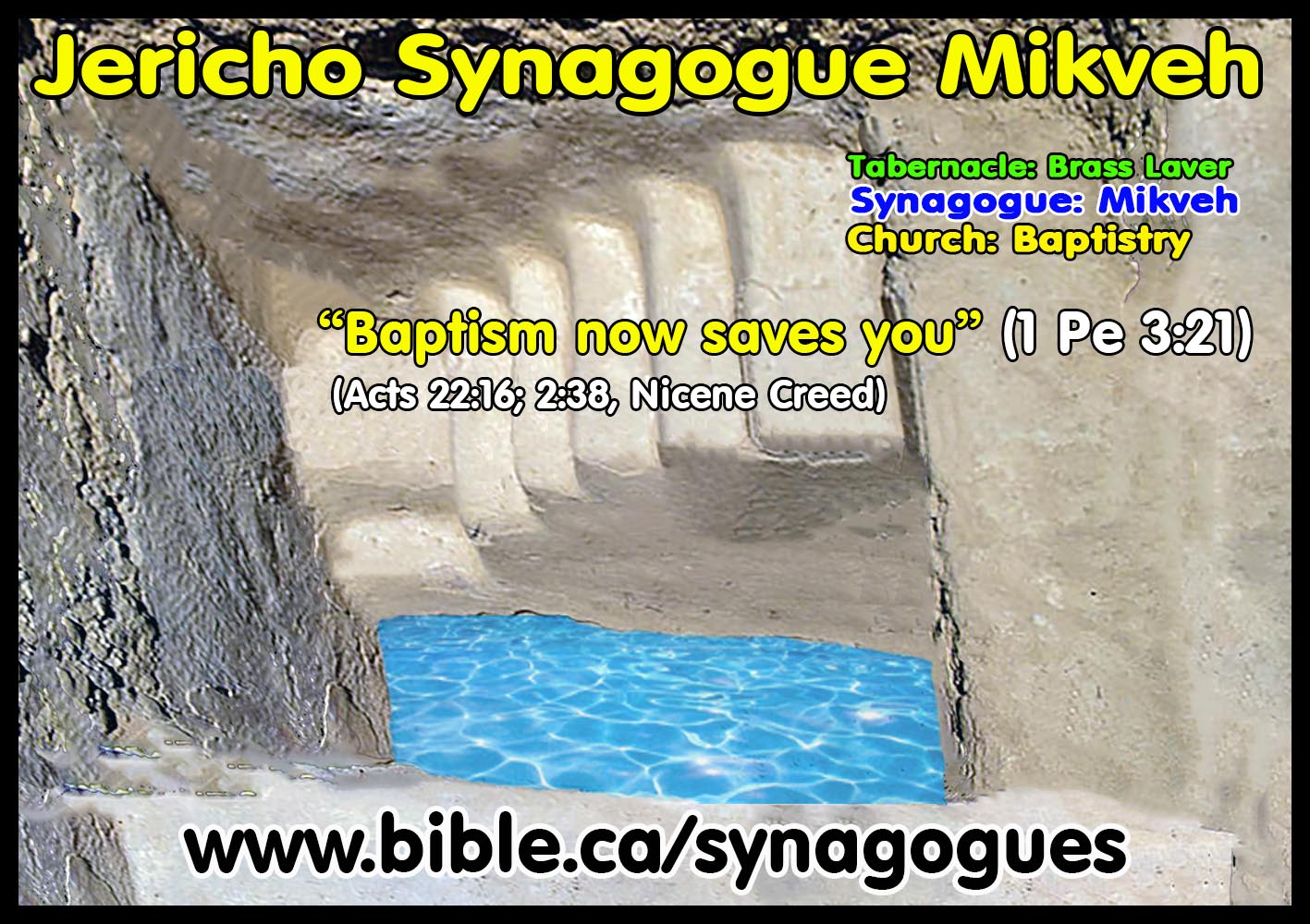
c.
Here is the mikveh at the Goliath tomb in Jericho:
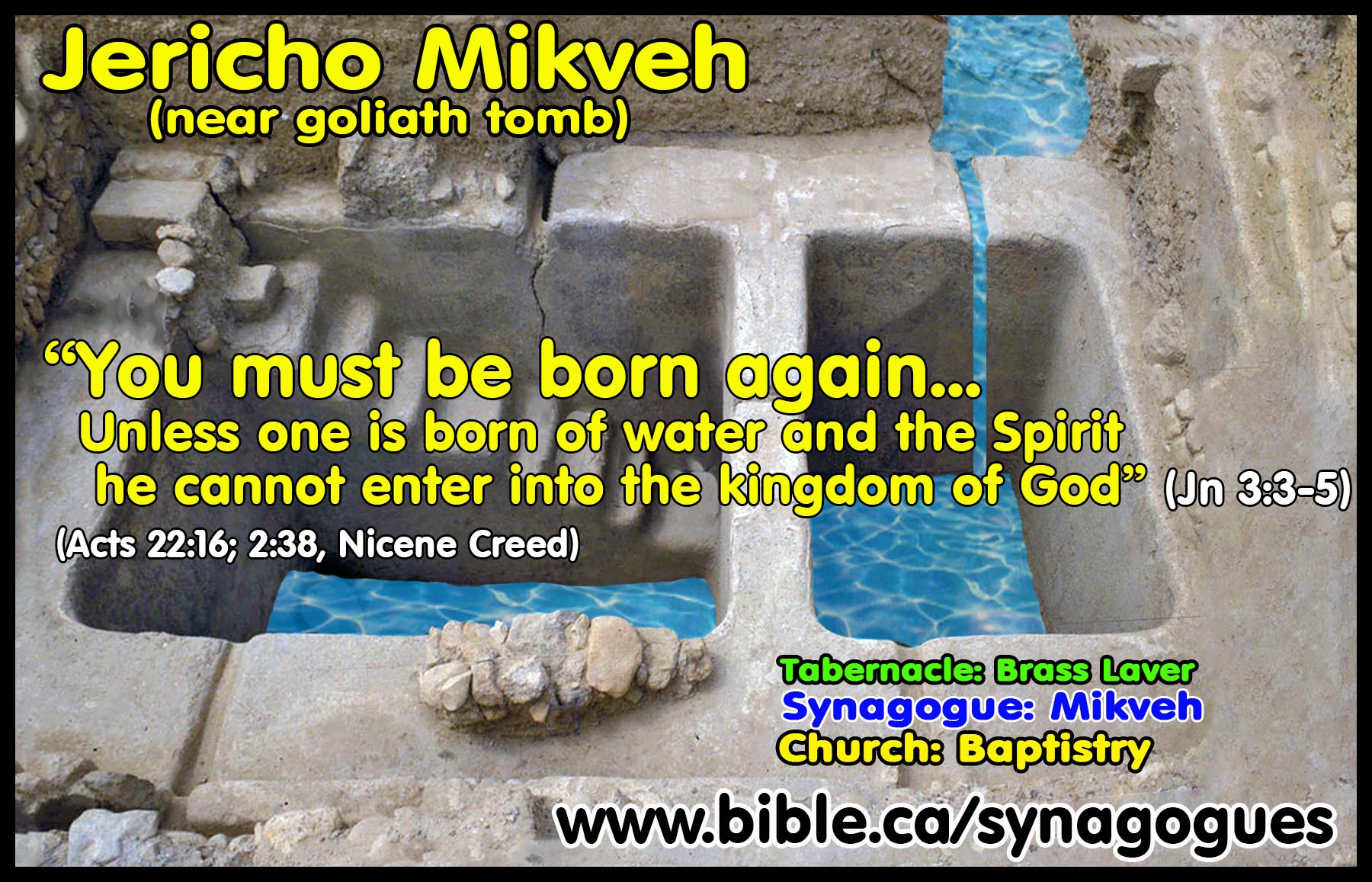
4. Opposite the synagogue was a triclinium for eating sacred Passover meals.
a. See also: Food: Sacred Passover Meals, No Common Meals In Synagogues
b. See also: Appendages: Hostels, Housing and Food Banks in Synagogues
5. “The building developed in three main stages, and measured 28 x 20 m in its final phase. The original edifice, dated ca. 80/74 B.C.E., did not contain the main hall interpreted as the assembly hall. The second phase, ca. 70 B.C.E., added the main hall, miqzveh and otzar around 70 B.C.E., while the third phase, some ten to twenty years later, added the triclinium at the west end of the main hall. The entire complex was destroyed in the earthquake of 31 B.C.E. The main hall had 12 pillars. Somewhat like other buildings identified as synagogues, there were aisles between the walls and the pillars on the southern and eastern sides of the main hall, the benches running between the pillars; on the western and northern sides, the benches are placed along the walls, so that the pillars stand between the benches and the open central area, as in other synagogue buildings. The location of the eastern and southern benches and pillars thus meant that the pillars did not obstruct the view with regard to the open area of the main hall, as in other early synagogues (cf. Strange, 43-44). The floor of the main hall was pressed earth as in the Gamla synagogue. Also, a channel carrying water from an aqueduct north of the building runs in a north-south direction through the main hall, feeding a basin in the building before continuing south to the otzar (cf. Gamla, No. 10). Although the Jericho building has several architectural features in common with other buildings identified as synagogues, one of the main arguments against this interpretation is the location of the building, which would seem to exclude a "synagogue community." This argument from context, however, is based on a specific definition of a "synagogue." As Runesson ("1st Century Synagogue") has argued, the building may have served the needs of an association synagogue (i.e., a guild house), where membership consisted of, e.g., the staff of the nearby Hasmonean palace. While the debate will likely continue and further discussion is needed, at this point the evidence seems to weigh in favour of the excavator's interpretation. (The Ancient Synagogue from its Origins to 200 AD, Anders Runesson, p41, 2008 AD)
6. “The oldest synagogue in Palestine has recently been exposed adjacent to the Hasmonean winter palace, north of Wadi Qelt, to the southwest of the city of Jericho. (See E. Netzer, Hasmonean and Herodian Palaces at Jericho, final report of the 1973-1987 Excavations, Vol. I, Stratigraphy and Architecture, Jerusalem 2001.) The Hasmonean winter palace, which ultimately covered an area of ca. 4 hectares and is characterized by an abundance of swimming pools, ritual baths (miqva’ot), orchards and by formal gardens, was in use for about a hundred years (ca. 130-30 B.C.E.). Seven building phases identified at the site are testimony to the intensive and lavish life which took place there. The synagogue was built on the fringe of the palace grounds, along a conduit, at the western edge of a row of ca. 10 buildings, erected in the days of Jannaeus or slightly later on. (These buildings were probably built to house chief officials.) The synagogue complex, which developed in two or three stages, finally attained a length of ca. 28 m and a width ca. 20 m. The building is situated next to and slightly lower than the above-mentioned conduit. Its main entrance was apparently on the south. The building’s eastern part consisted of seven rooms and a small courtyard. The western part included a fairly large hall (ca. 16X11 m) surrounded by pillars and aisles, the longitudinal axis of which runs from east to west. Immediately to the south of this hall is located a ritual bath with two small adjacent rooms. During the course of time, part of the hall’s western wall was demolished, and a room, ca. 6.5X5 m in size, was added on this side. No wall separated this room from the hall. Most of the room, which no doubt functioned as a triclinium, was occupied by a U-shaped bench. The synagogue was built of local building materials -- mud bricks on top of fieldstone foundations. (The same applies to both the Hasmonean and the Herodian winter palaces at the discussed site.) The whole building was undoubtedly coated with white lime plaster. The synagogue hall contained 12 pillars – five on the north and south, and an additional pillar at the center of the eastern and western sides. The nave’s floor was found to consist of beaten earth; however, in theory it could originally have been covered by plaster or other material that was later removed. The pillars measured ca. 90X80 cm in horizontal section, and they are preserved to a maximum height of ca. 80 cm. Like all of the surviving walls, the exposed remains of the pillars consisted of fieldstones and cobblestones, though their upper parts might have been built of mud bricks. The distance between the pillars was 2.25 cm in the long colonnades and 2.75 m in the short ones. A 50-cm-thick wall was exposed between the pillars, 50 cm beyond their inner face, with its top being equal to the level of the surrounding aisles. The latter walls, therefore, functioned not only as boundaries for the aisles but also as benches. A different situation existed in the northern aisle. Here, there might have been two more benches in addition to the one described above, but this remains in question. These two benches might have been removed during the lifetime of the synagogue, or alternatively, during looting of stones in the Herodian period. A single bench probably also existed along the hall’s western wall prior to the addition of the triclinium, as indicated by a ca. 50-cm-wide strip of repair in the floor. The main and only entrance into the synagogue hall was from the courtyard in the eastern part of the building. The floors of the nave and the courtyard were at the same height and, therefore, a few steps were required in order to ascend from the courtyard to the aisles and then descend to the nave. Two steps built of hewn stones were laid in the threshold. Other stairways built of fieldstones were located at a right angle to the door, one leading to the eastern aisle and the other to the southern one. In the course of the synagogue’s lifetime, the first two steps sunk partly, and new ones were laid on top of them. The synagogue hall is bisected by a minor channel originating from the conduit next to it and terminating in the ritual bath, south of the hall. Within the confines of the northern aisle, a small basin was attached to this channel. The basin was apparently used by the synagogue attendants as a source of drinking water, or for other purposes such as washing hands. A niche, 1.5 m wide and deep, was revealed in the northeastern corner of the synagogue hall. Although this niche is located within the confines of the aisles, its floor level was 50 cm lower. The niche itself was occupied by an installation, a sort of a cupboard built of fieldstones and mud, divided into two compartments. The lower one, 60 cm in height, which might have served as a geniza, was apparently covered by a mud arch which later collapsed. The entrance to this compartment was narrow (35X50 cm), making entry into the storage place, very inconvenient. A moveable wooden plank, at the level of the aisles’ floor, was probably fixed in front of this compartment in order to conceal the small entrance. The upper compartment was larger and was probably used to store Torah scrolls and the other books. In the last phase in the synagogue’s development, the above-mentioned triclinium was added to the synagogue hall. We believe that the builders’ initial intention was to locate the triclinium along the central axis of the hall; however, in such a case the central pillar would have been a visual obstacle. The builders, therefore, favored a compromise. The triclinium was shifted ca. 3 m southward, and the central pillar 1 m northward. The final result, although architecturally distorted, provided a rather good visual connection between the people sited in the hall and the smaller group reclining in the triclinium. The U-shaped bench was 1.4 m wide and was constructed of fieldstones and coated with lime plaster. Its top is missing, but a height of 40-50 cm is reasonable. A walkway, averaging 70 cm in width, was apparently for the use of those serving the food. A triangular small room, revealed north of the triclinium, was added to the synagogue hall at the same time as the triclinium and was apparently used as a kitchen. A small podium, apparently for cooking, built of mud bricks, and showing clear evidence of fire, was exposed in the room’s only right-angled corner. We shall now briefly survey the other parts of the building. There were two rooms to the south of the courtyard, one of which might have served as the vestibule of the building. The courtyard, which had a beaten earth floor, contained a water basin on its southern side. North of the courtyard is a “suite” consisting of a main room and four other rooms. The suite might have been used as a dwelling for occasional guests or for other, unknown purposes. South of the synagogue hall were revealed three rooms, all of which were coated with ash-lime plaster, connected to the courtyard by means of a corridor (also coated with plaster). The first two, small rooms were probably used for ablutions, whereas the third larger room contained a ritual bath (mikveh). The ritual bath comprised two deep pools (3.2 m), one with steps for immersion and the other lacking steps, apparently used as an otzar. The two pools were connected by a small channel situated at the top of their common side wall. More than 10 ritual baths of the same type were exposed by us in Jericho’s winter palace complex, all but one belonging to the Hasmonean period. Synthesis: We tend to divide the construction of the building into three phases. During the first phase, the eastern sector of the building was apparently built, either as part of the above-mentioned row or slightly later. The second phase witnessed the addition of the synagogue hall and the rooms to its south. In the third phase, the triclinium was added, as has been explained above. In our opinion, the most reasonable range of time for the construction of all three phases was between 75 and 50 B.C.E. (a period in which both Queen Salome and later her two rival sons were active), although this interval might have been slightly longer. The earthquake of 31 B.C.E. undoubtedly destroyed the synagogue building as well as its surroundings. Herod’s second palace at this site, erected ca. 25 B.C.E., was built on top of the synagogue’s ruins.” (A Synagogue from the Hasmonean Period Exposed at Jericho, Ehud Netzer, Institute of Archaeology, Hebrew University Of Jerusalem)
7. “Near the ruins of the Hasmonean Royal winter palace are the remains of the oldest known synagogue in Israel. It was built between the years 75-50 BC, probably during the reign of Queen Salome Alexandra (Shlomzion, reigned 76-67 BC, widow of Alexander Jannaeus). The structure complex covered an area of 28m by 20m, and was developed in 2-3 stages. It is made of mud bricks on a foundation of field stones, and includes a ritual bathing area, a courtyard flanked by seven-eight rooms, a genizah (storage of worn-out scrolls), and a rectangular main hall (16m by 11m) surrounded by a colonnade of 12 pillars resting on a raised platform. The platform supported a seating of 70 people. It is oriented to the west, facing Jerusalem. The synagogue complex and the palace were destroyed by the major earthquake of 31 BC (magnitude 7) which devastated the cities in the Western Jordan valley (such as Masada, Qumran and Jericho). Josephus Flavius wrote about this powerful quake (Ant. XV, Chapter 5): "At this time it was that the fight happened at Actium [BW: 31 BC], between Octavius Caesar and Antony, in the seventh year of the reign of Herod and then it was also that there was an earthquake in Judea, such a one as had not happened at any other time, and which earthquake brought a great destruction upon the cattle in that country. About ten thousand men also perished by the fall of houses..." Herod the Great rebuilt a new palace (his second) above the ruins of this synagogue, which was never rebuilt.” (Todd Bolen, Jericho Synagogue)
8. “Jericho: A complex of structures built on the eastern fringe of the Hasmonean Palace complex, at the end of some houses and adjacent to a water conduit at Jericho is identified as a Hasmonean period synagogue (Figs. II-la, 11-5). The synagogue complex, "built with abode walls on top of fieldstone foundations" has three phases (Netzer 1999; 2004:15-18; 2007; Netzer and Laureys-Chachy 2004:184-192). In Phase 1, the Courtyard House, a rectangle building, about 20 m x 10 m, with several rooms surrounding a courtyard, was erected. Phase 2 contained a rectangular hall (ca. 16.5 x 11.5 m) entered through the courtyard from the east; the hall was divided by 12 pillars supporting the roof, and benches were erected along the northern and western walls; a small niche was found on the northeastern corner of the hall, with a subterranean cell that was probably a genizah for storing scrolls. Phase 2 structures also included a water system, and a bathing suite consisting of a micrveh and two plastered rooms connected by a corridor. An attached room that included a U-shaped triclinium, a small, triangular room on the west side, and a kitchen was added in Phase 3. The synagogue was erected between 75-50 BCE by the Hasmonean queen Shlomzion and was probably destroyed by the earthquake of 31 BCE. Herod's second palace was built on part of it, about five years later. The synagogue served the royal estate and staff as well as the workers of the nearby large agricultural farm, but not the royal family (Netzer 2004:17). Netzer based his identification of the Jericho structure as a synagogue on the similarity to the Gamla synagogue building. He maintains the space could have accommodated 120 people at Jericho and about 430 at Gamla. The identification of the Jericho structure as a synagogue has been contested by some scholars: Maoz (1999) argues that the Jericho structure is not a synagogue but a vegetable or decorative garden adjacent to a building. Levine (2003b:187-88) aptly claims that the comparison of Jericho to Gamla is questionable because of too many differences: the location of the Jericho synagogue is peculiar; the argument that it served the palace staff is not convincing; and no community was found close by. A small basin found in the eastern aisle was fed by a channel and may have been used for washing hands. A similar basin was found in the Hasmonean period synagogue at Jericho. A miqveh was discovered south of the synagogue. Netzer also disagrees with the excavators' reconstruction of a gabled roof and suggests a flat roof on wooden beams, and that the center of the hall ceiling was higher and clerestory windows were set in the walls of the main hall (a clerestory is also proposed by Strange 2001:104, Figs. 3-4). On the east a small room with benches was discovered, possibly a study room. (Ancient Synagogues - Archaeology and Art: New Discoveries and Current Research, Rachel Hachlili, p28, 2013 AD)
Conclusion:
1. We know of two synagogues in Jericho, one in Old Testament Jericho (Byzantine: Shalom Al Yisrael) and one in New Testament Jericho (75-31 BC) a few kilometers away.
2. We have featured the Old Testament Jericho synagogue because the archeology is solid that it is a first century synagogue.
3. While the Bible is silent about any synagogue in Jericho, or that Jesus ever visited one there, it is certain that there would be a synagogue in such an important and historic town.
4. The synagogue of the first century is probably the Shalom Al Yisrael synagogue, which is in an enclosed white building in Old Testament Jericho and features amazing mosaics.
a. Add to this the number of Bible stories that happened at Jericho and the existence of a synagogue is to be expected.
b. Keep in mind that the Mishnah, Babylonian and Jerusalem Talmuds all say there were 400 synagogues in Jerusalem at the time of Jesus, yet NOT ONE has ever been located or excavated.
c. See also: Jerusalem Talmud
d.
Absence of evidence is not evidence of absence!
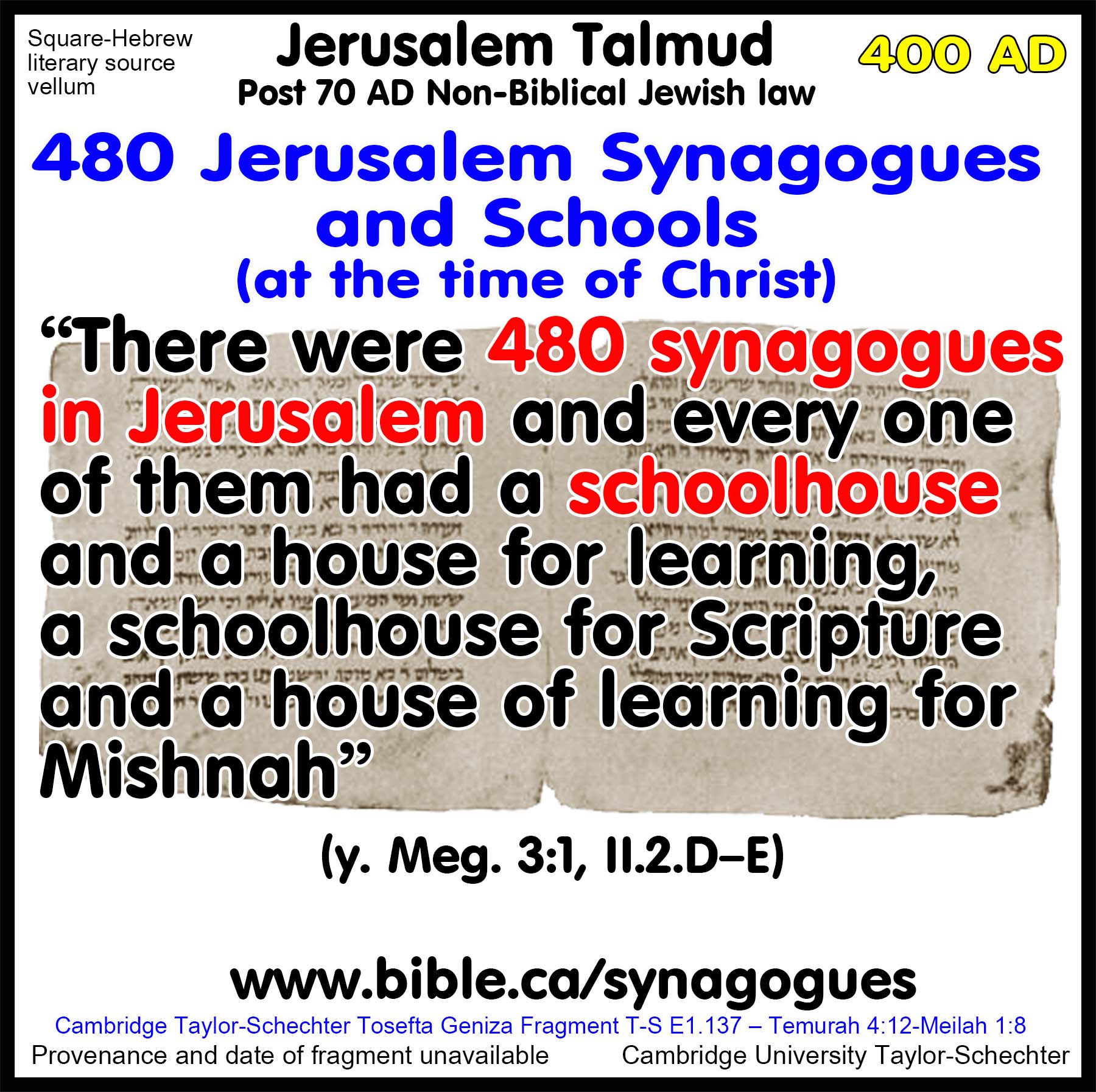
5. See also: First Century Jewish Messianic Expectation: As witnessed in the Dead Sea scrolls.
By Steve Rudd 2017: Contact the author for comments, input or corrections
|
Jesus your messiah is waiting for you to come home! |
|
|
Why not worship with a first century New Testament church near you, that has the same look and feel as the Jewish Synagogue in your own home town. As a Jew, you will find the transition as easy today as it was for the tens of thousands of your forefathers living in Jerusalem 2000 years ago when they believed in Jesus the Nazarene (the branch) as their messiah. It’s time to come home! |
|
By Steve Rudd: Contact the author for comments, input or corrections.
Go to: Main Ancient Synagogue Start Page
